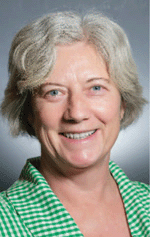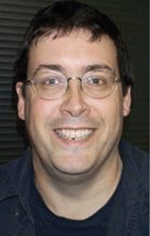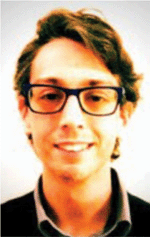Evaluation of the Petrel Sub-basin as a northern Australia CO2 store: future decarbonisation hub?
Linda Stalker A E , David Dewhurst A , Yanhua Zhang B , Peter Schaubs B , Ben Clennell A , Yohan Suhardiman C , Andrew Maxwell C , Franco Masserano D , Francesco Boccuni D , Claudio Toscano D and Daniele Castano DA CSIRO Energy, ARRC, 26 Dick Perry Avenue, Kensington, WA 6149, Australia.
B CSIRO Mineral Resources, ARRC, 26 Dick Perry Avenue, Kensington, WA 6149, Australia.
C Eni, 226 Adelaide Terrace, Perth, WA 6000, Australia.
D Eni SpA, Via Emilia 1, 20097 San Donato Milanese, Italy.
E Corresponding author. Email: linda.stalker@csiro.au
The APPEA Journal 60(2) 765-772 https://doi.org/10.1071/AJ19180
Accepted: 6 March 2020 Published: 15 May 2020
Abstract
The Northern Australia CO2 Store Project has extended investigations for safe, long-term containment of large volumes of CO2 (up to 100 million tonnes) to support liquefied natural gas and other industries in a decarbonised future. Most natural gas fields in the Petrel Sub-basin and the surrounding region have relatively high native CO2 content. This collaborative project improved storage characterisation, evaluated geomechanical risks and estimated engineering demands necessary to progress the concept to ‘prospect’ and ‘resource’. New data have significantly advanced the geological and structural understanding in the region, improving chrono- and litho-stratigraphic correlations, with new well ties across the basin. However, the re-mapping has thrown up new questions that require additional data (e.g. new stratigraphic wells, 3D seismic data) to address those knowledge gaps. Geomechanical modelling in the area has tested (to extreme levels) the potential impact of injection on faults in the area, further de-risking the likelihood of upward migration and leakage. The region could utilise an abundance of energy and feedstocks in the form of solar, natural gas, hydrogen and CO2 to become a future decarbonisation and industrial hub while managing major emissions with offshore CO2 storage.
Keywords: analogues, emissions reduction, high CO2 fields, Northern Territory, offshore, storage hub, vertical core-flood.

Dr Linda Stalker obtained a BSc (Hons) in Applied Geology from the University of Strathclyde, Scotland, in 1990. Her PhD on petroleum geochemistry and CO2 generation, was gained at the University of Newcastle upon Tyne, UK. In 1994, she joined the University of Oklahoma (USA) on a Department of Energy sponsored post-doctoral study into organosulfur compounds trapped in coals. From 1996, she worked in petroleum exploration and production (EandP) at Statoil, Norway, including two years on the Sleipner Field. She joined CSIRO in 2000 and has held numerous positions while maintaining research expertise in hydrocarbon EandP and carbon storage research. She is a member of the American Association of Petroleum Geologists and the Geochemical Society. Linda has been acting-CEO of the Western Australian Energy Research Alliance for 15 months. |

Dave Dewhurst is a Senior Principal Research Scientist at CSIRO Energy in Perth. He holds a BSc (Hons) in Geology from the University of Sheffield (UK) and a PhD in Physics from the University of Newcastle Upon Tyne (UK). He previously held post-doctoral positions at the University of Birmingham (UK), the University of Newcastle upon Tyne (UK), the Institut Français du Pétrole near Paris and Imperial College, London, before moving to CSIRO in 1998. He works on mechanical and physical properties of rocks for petroleum exploration and development, specialising in overburden and gas shales, as well as reservoir and seal evaluation for geological storage of CO2 and other gases. |

Yanhua Zhang is a Senior Principal Research Scientist at CSIRO Mineral Resources in Perth. He holds a BSc in Geology from the Central-South University (China), A MSc in Geology from the Changsha Institute of Geotectonics (Chinese Academy of Sciences, China) and a PhD in Geology from Monash University (Australia). He specialises in coupled fluid flow and geomechanical modelling, applied to structural geology, mineral-petroleum systems and the storage of CO2. |

Peter Schaubs holds a PhD, awarded in 1999, from the University of Melbourne, Australia. Prior to that, he studied at Carleton University in Ottawa, Canada, obtaining both his bachelor’s and master’s degrees in Earth Sciences. Peter is a structural geologist and numerical modeller focusing on effects of deformation on the sub-surface. He is a Team Leader in the Mineral Resources business unit at CSIRO, looking after 3D structural geology and numerical modelling. |

Michael (Ben) Clennell is a Senior Principal Research Scientist in the area of rock physical properties. After graduating with a BA in Geology from the University of Oxford in 1988, he was awarded his PhD in Geology from the Royal Holloway University of London in 1992. Dr Clennell worked as a university researcher in the UK and Brazil, investigating the rates and roles of fluid flow in marine sediments, active tectonic processes at convergent margins, fault rock properties and the electrical and electrokinetic properties of sedimentary rocks. He joined CSIRO in 2003 and is currently a Senior Principal Research Scientist specialising in rock physical properties. Dr Clennell has been involved in the Ocean Drilling Program science since 1992, and he has served on the Science Evaluation Panel of the successor Integrated Ocean Discovery Program (IODP). He is a member of the Australian IODP governing council and science committee. |

Yohan Suhardiman has been a Reservoir Engineer at Eni for 13 years. He graduated from the Institut Francais du Petrole School, France, in 2003 with a master’s degree in Petroleum Engineering. From there, he joined Total Indonesia before joining Eni Indonesia in 2006, working on some of their gas field assets. He relocated to the Eni head office in Milan in 2009 to work with their international team to cover a range of locations, including Australia. In 2011, he relocated to the Perth office where he now works as a Reservoir Simulation Engineer and conducts integrated reservoir studies and evaluates both conventional exploration and potential for carbon storage assets. |

Andrew Maxwell graduated from the University of Technology (Sydney) with a BSc (Hons) in Geology. Andrew worked for BP Exploration and MIM Petroleum while completing his studies. After graduating, he joined Cultus Petroleum, working on the company’s Otway, Gippsland, Bonaparte and Taranaki Basin interests. He joined OMV Australia in 1999 as a Senior Geophysicist, primarily working on OMV’s operated Timor Sea permits. He joined Eni Australia in 2012, working on new ventures and Eni’s exploration assets. Over the last three years, his focus has been on the Evans Shoal project, both on the sub-surface and joint venture management sides. |

Franco Masserano studied at the Universita degli Studi di Milano, Italy, graduating with a PhD in Physics. He taught physics in high school briefly before joining Eni in Milan in 1990. During his time in the Petroleum Engineering department he has worked as part of reservoir study teams as well as conducting research. He has worked extensively in enhanced oil recovery (EOR), advising on projects around the world. |

Francesco Boccuni started as an Intern at Eni in 2016 and has recently transferred to EniMed to work as a Petroleum Engineer. He studied Energy and Nuclear Engineering at Politecnico di Torino, Italy, before specialising in Petroleum Engineering and Operations. His particular interests are in CCS, EOR and reservoir modelling. |

Claudio Toscano studied at the Università delle Scienze di Torino, Italy, graduating in Geology in 1993. After working as Field Geologist for Politecnico di Torino, he joined Eni (formerly Agip S.p.A.) as a Structural Geologist. From 2000, he joined the Eni reservoir department, initially in the fracture modelling team before working in different projects worldwide in both oil and gas assets, including projects in Australia. Currently, he works as a Reservoir Advisor. |

Daniele Castano graduated as a Mining Engineer from the Politecnico di Torino (Italy). He has worked as a Senior Reservoir Engineer at Eni’s Milan office and has over 26 years’ experience in reservoir modelling and simulation, production performance prevision and analysis, fluid characterisation, hydrocarbon reserves evaluation and classification and decline curve analysis. He conducts a range of static and dynamic modelling using industry software and has applied that expertise to EOR and CCS projects. |
References
Carbon Storage Taskforce (2009). ‘National carbon mapping and infrastructure plan – Australia: full report.’ (Department of Resources, Energy and Tourism: Canberra.)Clennell, B., Dewhurst, D., Delle Piane, C., Zhang, Y., Schaubs, P., and Stalker, L. (2017). Geomechanics and core flooding for the Northern CO2 Store Project. Report Number: Milestone 3 EP174799, June 2017. (CSIRO Epublish: Canberra.)
Consoli, C., Higgins, K., Jorgensen, D., Khider, K., Lescinsky, D., Morris, R., and Nguyen, V. (2014). Regional assessment of the CO2 storage potential of the Mesozoic succession in the Petrel Sub-basin, Northern Territory, Australia: summary report. Record 2014/11. (Geoscience Australia: Canberra.) Available at http://dx.doi.org/10.11636/Record.2014.011 [Verified 24 March 2020].
Cotton, A., Gray, L., and Maas, W. (2017). Learnings from the Shell Peterhead CCS Project front end engineering design. Energy Procedia 114, 5663–5670.
| Learnings from the Shell Peterhead CCS Project front end engineering design.Crossref | GoogleScholarGoogle Scholar |
Dewhurst, D., Zhang, Y., Schaubs, P., and Stalker, L. (2019a). Impact of fault permeability on geomechanical models of CO2 injection in the Petrel Sub-basin, Northern Australia. In ‘Conference Proceedings, Fifth International Conference on Fault and Top Seals, Palermo, Italy, 8–12 September’. Volume 2019, pp. 1–5. (European Association of Geoscientists & Engineers (EAGE): Houten, The Netherlands.) Available at https://doi.org/10.3997/2214-4609.201902334 [verified 21 April 2020].
Dewhurst, D., Zhang, Y., Schaubs, P., Stalker, L., and Michael, K. (2019b). Preliminary geomechanical modelling of fault reactivation potential during CO2 injection for the Northern CO2 Store Project, Petrel Sub-basin, NW Australia. CSIRO Report EP191035. (CSIRO Epublish: Canberra.)
Gibson-Poole, C. M. (2009). Site characterisation for geological storage of carbon dioxide: examples of potential sites from the North West Shelf, Australia. PhD Thesis, University of Adelaide, Adelaide, SA, Australia.
Johnstone, R., and Torres, J. (2017). The Northern Australia CO2 store Petrel Sub-basin: refining the geological evaluation for CCS. Presented at the Northern Australia CO2 Store Workshop at CSIRO, Kensington, WA, Australia, 18 May 2017. Available at http://www.beg.utexas.edu/files/gccc/research/goi/2017/Owain%20For%20CSLF%20shortened%20PUBLIC%20Shell%20Presentation%20to%20NGL%20RDD%20Northern%20Australia%20CO2%20Store%20Workshop%2018%20May%202017_RosieJohnstone.pdf [verified 21 April 2020].
Tucker, O., Gray, L., Maas, W., and O’Brien, S. (2016). Quest commercial scale CCS – the first year. In ‘International Petroleum Technology Conference, Bangkok, Thailand, 14–16 November 2016’. IPTC-18666-MS. (International Petroleum Technology Conference.)


